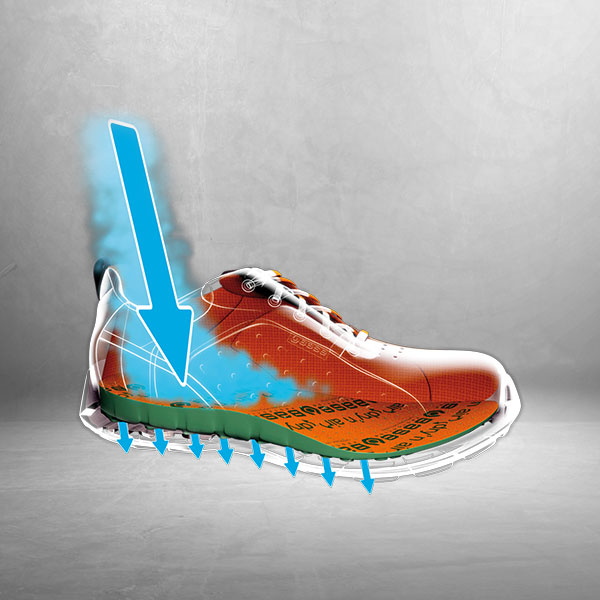- today
- label Guide
- favorite 1 likes
Which work shoe insoles should you choose? This question is asked by everyone who wants to literally get rid of their legs after a day of standing on their feet at work. The choice is not easy at all, because the awareness of the functions that they play in the entire system of working clothes of the insoles is very low. Everyone knows what the insole looks like, a piece of fabric, foam, gel that we put in the shoe and supposed to help us move. It is worth considering why we wear insoles, what are their tasks and what are the consequences of inappropriate selection.
One liners for a lifetime? Yet we only have one set of joints
It is not without reason that runners and athletes pay a lot of attention to the right selection of shoe insoles. Our entire skeletal system rests on the feet, and therefore also on the insoles. So if your foot is badly positioned in the shoe, your entire figure will probably be deformed and it will end up with pain in the joints and spine. And as you know, we have one for life. It is true that nobody runs in work shoes. On the other hand, we usually wear them a lot, sometimes even for several hours. And what about standing work, e.g. working with the assembly line. You also need to pay attention to your weight, which can also affect the load on your joints. Also remember that your feet may not show any pain symptoms for a long time, but remember if your hips or knees did not hurt after a hard day at work?

Insoles in work shoes and their task
The insoles are therefore designed (together with the appropriate shoe sole) to absorb the energy generated while walking and moving during work. The cushioning material can be all kinds of synthetic foams (EVA), a gel or a mixture of these solutions. Insoles for work shoes can also be equipped with the so-called shock aborber or an additional energy absorber. In terms of cushioning, the insoles are particularly good:
- Base Protection Dry'n Air made of energy-absorbing gel with an energy absorber under the heel,
- Solid Gear SG SG20002 with Poron technology, which absorbs up to 90% of the energy generated while walking,
- Reebok Memory Tech Massage made of soft foam with massage insets, which is designed to relax the feet during use,
Looking for a hole in the whole - why do you need perforation of the insert
If you are looking for an insole for work shoes, then definitely look for one that has perforations. Why? Because the perforation is designed to drain moisture from your foot under the shoe insole and this moisture, even if it appears in the shoe, is to stay under the insole. Far from your foot. There are no shoes in which the legs do not sweat, there are also no legs that do not sweat, but you can construct a good system that will prevent your feet from chafing and will provide you with comfort even during many hours of walking or standing.
How much do you have to spend on good work shoe insoles?
This is a question that you can answer to yourself only when you answer the question "how much is my comfort worth, how much is my health worth, how much is my physical fitness worth". The prices of insoles for work shoes start from about PLN 40 and end at the amounts of PLN 100 - 150. In our opinion, it is worth first of all to examine your needs, consider the conditions at work:
- How much do I walk, do I stand more?
- does it work at high temperature? Are the weather conditions changeable?
- how much cushioning do my shoes have?
- do I have any foot or joint problems?
- what is my walking technique? Do I have phenomena such as foot pronation? (does the foot rotate excessively)
How many times should you change the insoles in your work shoes?
In the optimistic variant, i.e. when we do not limit our funds at all, we recommend replacing them every 2-3 months. Of course, depending on mechanical wear. We should also remember that the insoles absorb a large part of the moisture generated in the shoe. Therefore, also for hygiene reasons, it is worth replacing them as often as possible.
By the way, see our mountain test of the Base Protection inserts on our Facebook group.
